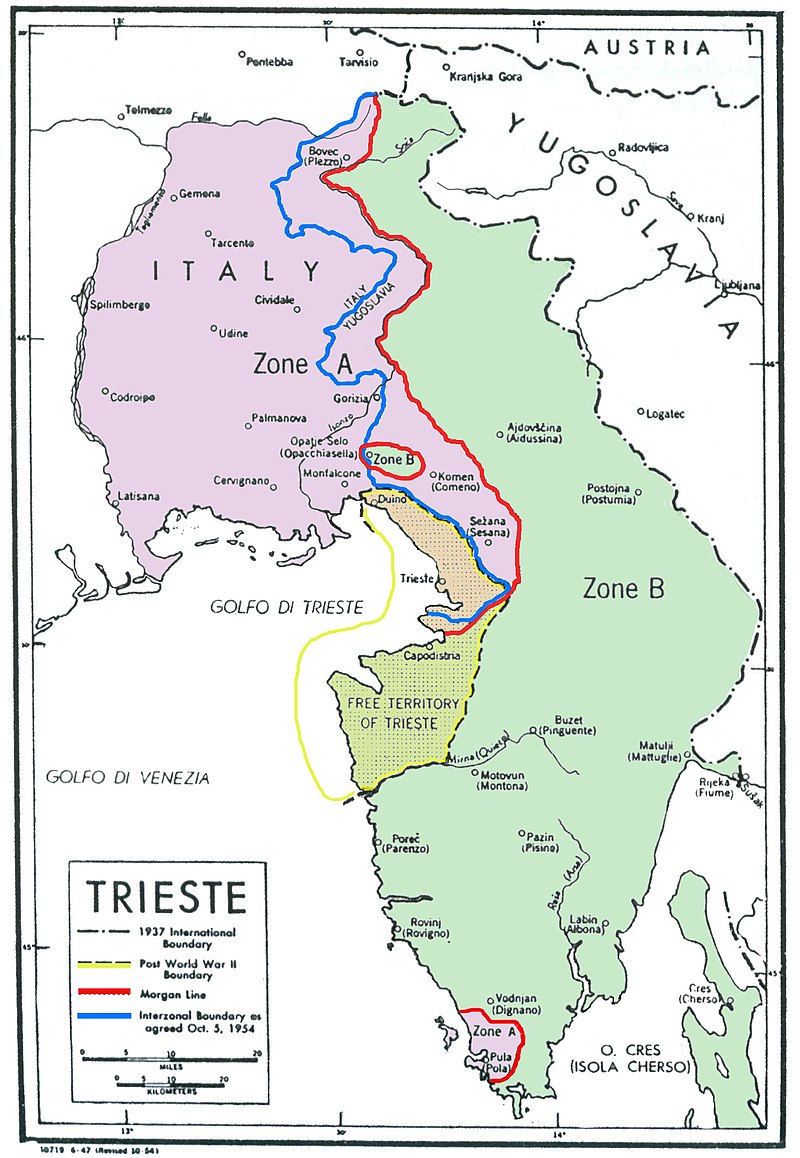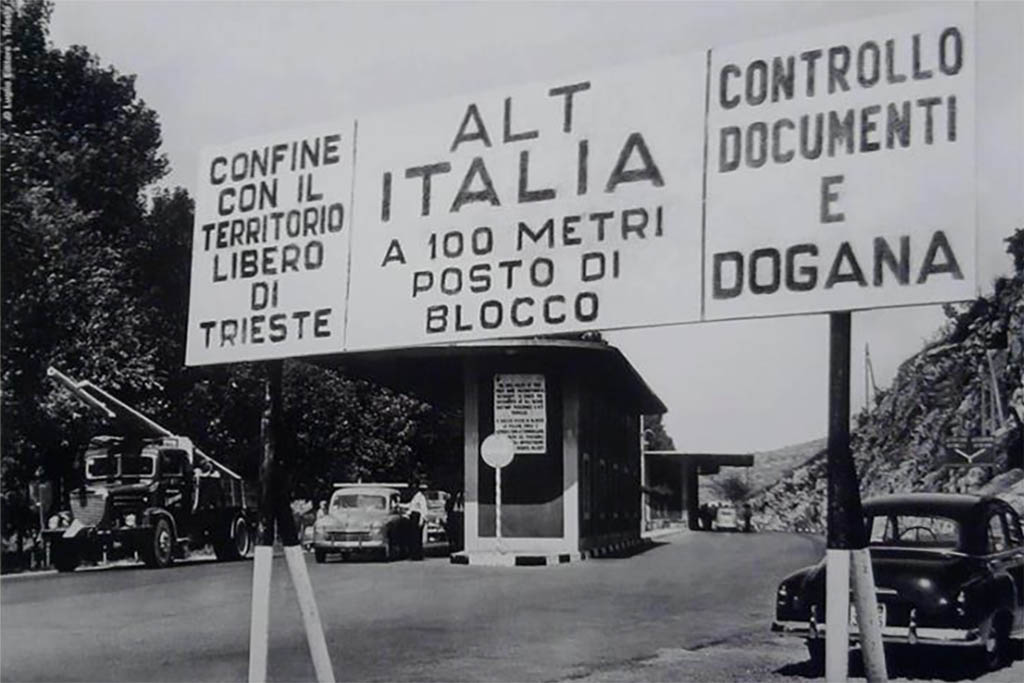Allied occupation and the Free Territory of Trieste
With the Belgrade agreements (9 June 1945) followed by the definitive withdrawal of the Yugoslavs from Trieste (12 June), the entire Venezia Giulia was divided into two zones, (according to a line drawn by General Morgan, who gave it his name) the first of which (zone A), with Trieste, administered by the Anglo-Americans, and the second (zone B), by the Yugoslavs. In 1947, following the Paris peace accords (1947), Gorizia, Monfalcone and other limited areas of Venezia Giulia were assigned to Italy, while Istria and most of the rest of the Julian region, to Yugoslavia. The following remained excluded from the assignment: Trieste (with part of zone A), and the north-western part of Istria, up to the Mirna River (residual part of zone B).
After the loss of sovereignty over the territory of Trieste by Italy, the British United States Zone - Free Territory of Triest (BUSZ-FTT) - Free Territory of Trieste, Anglo-American Zone was temporarily established in Trieste. Subsequently, from September 1947, the city and zone A became part, under the aegis of the UN, of the Allied Military Government - Free Territory of Triest (AMG-FTT), Free Territory of Trieste, with a Military Government ally. Zone B of the FTT was instead given in administration to Yugoslavia. According to the UN, a Free Territory of Trieste should have been created, including both Zone A and Zone B, with a seat at the UN.
On October 8, 1953, the ambassadors of the United States and Great Britain in Rome informed, by means of an official declaration, the Italian and Yugoslav governments that it was the intention of the countries they represented to put an end to the military occupation of zone A as soon as possible, which it would have been entrusted to Italy for administration. In a secret annex, made known only to Italy and not to Yugoslavia, it was also stated that the two powers considered this partition to be definitive and that they would oppose any military intervention by Yugoslavia to recover zone A, but not its annexation. of zone B. The prompt reaction of Yugoslavia, which condemned this partition by sending troops along the border, promptly followed by Italy (50,000 men faced each other on both sides of the Italian-Yugoslav border) together with the protests of the Soviet Union, against the disappearance of the FTT, prevented Great Britain and the United States from implementing the intentions contained in the declaration.
Immediately after the declaration of 8 October there were several demonstrations both against and in favor of the return of Trieste to Italy. Among the first was that of about two thousand Slovenian students who protested in the city center: young Italians, as a reaction, invaded the offices of the Yugoslav economic delegation, smashing glass and throwing furniture into the street. The tension reached its climax in the Revolt of Trieste, in early November of that same year. On the 4th the Italian Victory Day in the First World War was celebrated and many from Trieste went to pay homage to the fallen in the military memorial of Redipuglia, crossing the Duino checkpoint and entering Italian territory. Upon returning, in the evening, the first demonstrations took place. On the morning of November 5, the mayor of Trieste had the Italian Tricolor hoisted on the Town Hall tower in place of the red-halberd flag. The Tricolor was lowered hours later by the British. In protest, a crowd gathered in front of the Police Headquarters from where shots were fired that killed Pietro Addobbati and Antonio Zavadil. This took place on November 5, 1953. The following day a general strike was called in protest, and the people of Trieste converged en masse in Piazza Unità, to demonstrate against the Allied military government. Police officers fired on the crowd from the Government Palace killing four other demonstrators: Emilio Bassa, Leonardo (Nardino) Manzi, Saverio Montano, Francesco Paglia. At this point the revolt broke out and the situation became uncontrollable. American troops, unrelated to the events, promptly intervened, managing to placate the crowd. The city authorities vigorously protested against the perpetrators of the barbaric massacre. The Allied Military Government was officially asked to deliver the English troops and civilian police to the barracks on the day of the victims' funeral. The order service was carried out, for the most part, by port workers.










